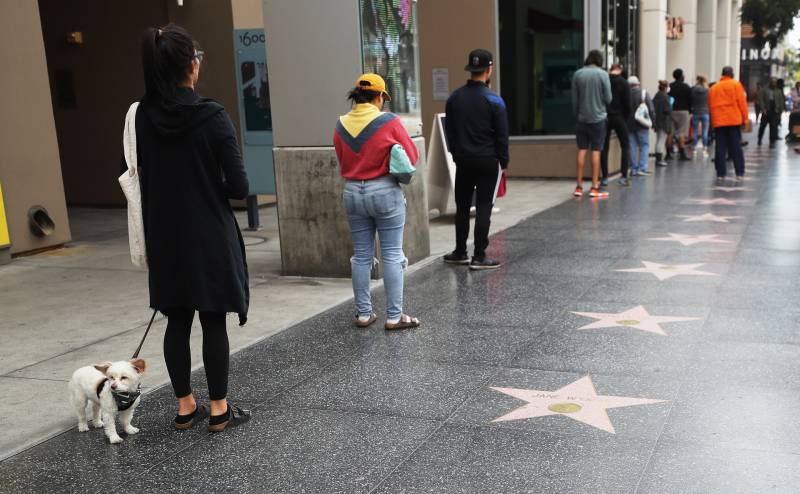In terms of the latter, they suggest if infection with the human coronaviruses, HKU1 and OC43, gives some protection again SARS-CoV-2, it could appear that transmission of the new virus was tapering off. But a return within a few years would be expected, perhaps by 2024, they suggested. The two human coronaviruses induce only short-term immunity — less than a year — in infected people.
If SARS-CoV-2 triggers immunity of a similarly transient nature, annual wintertime waves of infection might be expected, they said. If the immunity lasts longer, the time between surges of cases might be a couple of years, or more.
And if immunity is permanent, the pandemic might burn itself out by about 2025, they said. The researchers suggested, though, that that scenario is unlikely.
The model predicts that a one-time social distancing effort of the type currently being employed in most parts of the country will not stop transmission of the virus. If treatments are developed that can prevent COVID-19 patients from progressing to severe disease or if a vaccine is developed, movement restrictions could be loosened without health care capacity being overwhelmed, the researchers said.
Likewise, increasing the capacity for intensive care beds could also allow a community to loosen its restrictions, as long as it could cope with the severe cases the increased spread would generate. That could speed progress towards herd immunity — the point where enough people have some immunity that transmission should drop off, they said. Without these extra tools, though, transmission will resurge once controls are loosened, the authors warned.
“So I think distancing interventions of some sort are going to have to continue, hopefully lightened and in conjunction with other interventions,” said Marc Lipsitch, a leading infectious diseases epidemiologist and senior author of the study.
Infectious diseases epidemiologist Caitlin Rivers said the modeling work will be useful for public health officials and disease experts trying to plan for the continued response to the virus.
“What this is saying is that SARS-CoV-2 will stay with us through 2022, that it’s not going to die down to nothing in the summer. So I think it’s helpful for thinking what interventions are sustainable and effective,” said Rivers, an assistant professor of epidemiology at the Johns Hopkins Center for Health Security. “If we knew that we only had to make it through another two weeks, we might make different decisions than understanding that this is a threat that will be with us for many months,” she added.
While acknowledging that intermittent periods of distancing over several years “is obviously a very long time,’’ Lipsitch said loosened restrictions could come sooner if scientists discovered that a lot more people have been infected already and have some immunity. He and his co-authors stressed how critical it is to conduct long-term serology studies designed to map out human immune responses to the virus over time.
“On the other hand, there are some indications coming out at the moment that not every case of COVID-19 infection … generates a robust immune response, which would mean that the build up of herd immunity is slower than its anticipated here,” he added.
The study does not look at whether imposing social distancing only among certain high-risk groups — including older adults and those with serious underlying health problems — might keep the number of severe cases low enough that health systems would be able to handle them.
Another of the authors, Yonatan Grad, said tailoring restrictions to high-risk groups would be an important idea. But one would also need to factor in whether people who had been freed from social distancing restrictions would then interact with people in those restricted groups — something that might depend on the composition of individual households, he said.
Lipsitch acknowledged that delaying the development of herd immunity — effectively keeping large numbers of people susceptible to the virus by shielding them from infection — runs a risk of creating a larger wave of illness later, if controls are eased during a time when the virus transmits more easily, as it is expected to do during winter months. But delaying infections buys time, he said.
“Pushing bad things out into the future is something we want to do because we should know more about treatments, we may be closer to a vaccine,” he said. “So there is some benefit to delay, but it might be offset in the seasonal scenario where we push the peak into the high transmission time around the winter.”

